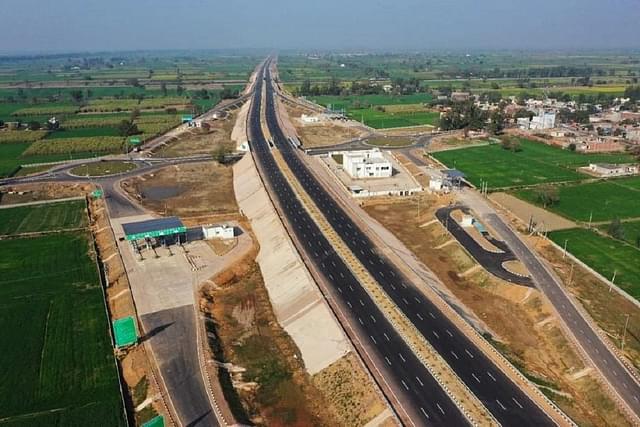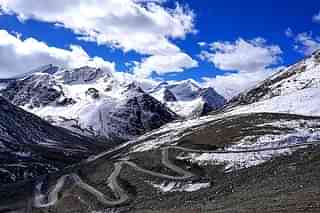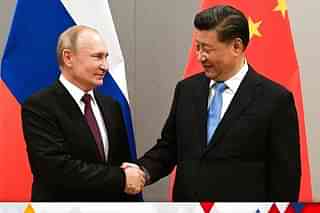Infrastructure
Centre Explores Options To Unlock Land Value For Funding India's Road Network Expansion
V Bhagya Subhashini
Apr 23, 2024, 06:28 PM | Updated 06:28 PM IST
Save & read from anywhere!
Bookmark stories for easy access on any device or the Swarajya app.

The government is actively exploring policy mechanisms to harness the increase in land value resulting from road projects, aiming to bolster funding for infrastructure development.
The Ministry of Road Transport and Highways (MoRTH) is examining global best practices for innovative infrastructure financing methods. The decision on the chosen mechanism will be finalised after the new government assumes office.
"The strategy aligns with the ministry's long-term vision. We aim to capture and reinvest the rise in land value along our upcoming expressways to finance future infrastructure projects," a government official explained.
The proposed 'betterment' levy involves a one-time charge on property owners near expressways who benefit from government infrastructure development, with the fee varying based on proximity to the expressway, as per an Economic Times report.
Land value capture is a globally recognised tool for generating revenue for public services. Countries like Colombia and Brazil are experimenting with the betterment levy, while the US and Canada are implementing impact fees for certain projects.
Latin American countries are exploring additional development rights, and Japan and Germany are considering land pooling or readjustment.
Jagannarayan Padmanabhan, senior director and global head of consulting at CRISIL Market Intelligence and Analytics, emphasised that 'land value capture' is a proven method for capturing land value appreciation due to government spending on infrastructure.
"While feasible in India, challenges lie in demarcating zones as land value increases closer to the development area and decreases farther away, making uniform charges a challenge," Padmanabhan said.
The Centre aims to tap into the increased land value near highway projects, benefiting real estate developers, to bolster public infrastructure funding.
India needs over Rs 20 lakh crore by 2030 to upgrade its road infrastructure. Alongside land value capture, asset monetisation can help reduce reliance on budgetary support, which is estimated at Rs 278,000 crore for FY25.
The government has approved 27 greenfield expressway projects totalling 10,000 km at a cost of Rs 4.5 lakh crore, expected to be completed by 2030.
Currently, the ministry, through the National Highways Authority of India, is exploring asset monetisation avenues like toll-operate-transfer and infrastructure investment trust modes to raise funds for these projects.
Save & read from anywhere!
Bookmark stories for easy access on any device or the Swarajya app.
Support Swarajya's 50 Ground Reports Project & Sponsor A Story
Every general election Swarajya does a 50 ground reports project.
Aimed only at serious readers and those who appreciate the nuances of political undercurrents, the project provides a sense of India's electoral landscape. As you know, these reports are produced after considerable investment of travel, time and effort on the ground.
This time too we've kicked off the project in style and have covered over 30 constituencies already. If you're someone who appreciates such work and have enjoyed our coverage please consider sponsoring a ground report for just Rs 2999 to Rs 19,999 - it goes a long way in helping us produce more quality reportage.
You can also back this project by becoming a subscriber for as little as Rs 999 - so do click on this links and choose a plan that suits you and back us.
Click below to contribute.





